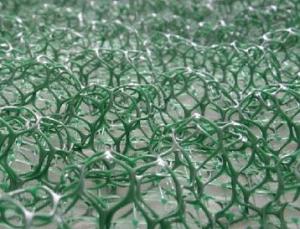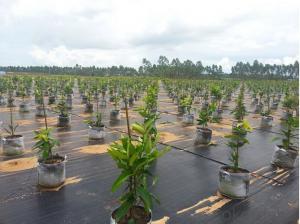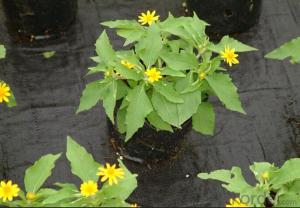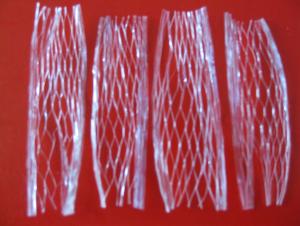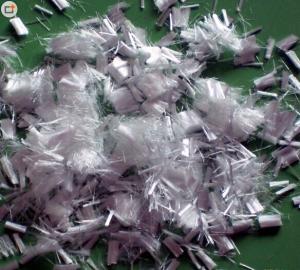Three-Dimensional Geonet Cushion Click Click
- Loading Port:
- Qingdao
- Payment Terms:
- TT OR LC
- Min Order Qty:
- 1 m²
- Supply Capability:
- 10000000 m²/month
OKorder Service Pledge
OKorder Financial Service
You Might Also Like
Three-Dimensional Geonet Cushion Click
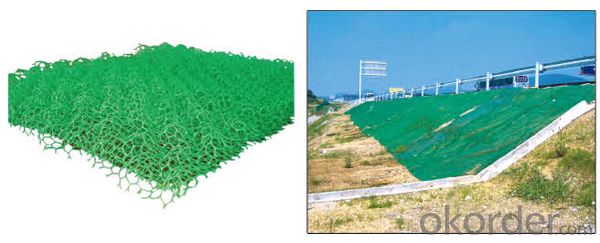
3 d geotechnical nets pad
Products overview:
Shandong yongrun plastic 3 d geotechnical nets pad is a kind of three-dimensional structure of the applicable to soil and water conservation of new geosynthetic materials, the underside is a layer or multi-layer two-way stretch or the plane nets, surface out for a layer or multilayer the stretch out the formation of a surface spot welding nets, a bump bubbly multilayer mesh structure, with more than 90% of the space with soil and grit, bottom two-way stretch nets have extended rate is low, the characteristics of the high strength, plays a role of the soil to prevent falling, the roots of the plants from the soil nets cushion in the balance, comfortable deep underground through a 0.5-2.0 meters deep, such vegetation nets pad and earth formed three a solid composite mechanical embedded system, in order to lock to protect the purpose of the slope.
Product features:
1, hold the soil is very clear role, the experiment proved, in the grass, when not before the formation of slope Angle of 45 °, 3 d geotechnical nets cushion block solid earth rate is as high as 97.5%, when for 60 ° cant, its block rate still can be as high as 84%, far wins in lattice
2, China and later, can firmly grass evenly distributed to keep slope, the wind and rain rushed from lost, ensure the lush grass and even the
3, grass grow older, and nets mat and soil formed three a solid composite mechanical embedded lock system, can prevent the heavy rain and winds hit, and rushed to withstand high water level, big flow, instead of the impact of the concrete build by laying bricks or stones, plasma PianShi as permanent protection layer
4, can dramatically reduce the construction cost, cost only for slope protection and dry concrete block stone slope protection, 1/7 of the plasma block stone 1/8 of the slope protection
5, the construction is simple, the surface level off, can the construction
6, and the use of high polymer materials and ultraviolet light stabilizers, the chemical stability, free from pollution to the environment (degradation of nets mat type two years after leaving no trace of soil again)
7, green vegetation could attract the motor vehicle exhaust, and can beautification landscape, protect the environment, green highway, railway along the route
Application:
1 and alternative concrete, asphalt, stone etc slope surface materials, mainly for the highway, railway, river, DAMS, hillside slope protection, etc
2, not long before the grass, can prevent slope surface soil erosion and grass seed was, and to facilitate the grass roots and the growth of the development
3 and plant growth of the formation of the composite plants up blanket can prevent high water flow speed of water erosion
4, can achieve rapid plant protect, mechanical seeding, effectively improve the construction efficiency and mention high plant protect green quality
5, used for cultivating industrial lawn, realizing fast green lawn commercialization
The product specification:
EM2 EM3 EM4 EM5
- Q:Material science and civil engineering which is better?
- According to the different options of the school
- Q:Can geosynthetics be used for bridge abutment reinforcement?
- Yes, geosynthetics can be used for bridge abutment reinforcement. Geosynthetics such as geotextiles, geogrids, and geocomposites are commonly used to improve the stability and performance of bridge abutments. They can provide soil reinforcement, prevent soil erosion, and enhance the overall structural integrity of the abutment.
- Q:How do geosynthetic materials contribute to groundwater protection?
- Geosynthetic materials contribute to groundwater protection by providing a barrier between contaminants and the underlying aquifers. They prevent the migration of pollutants, such as chemicals or waste, by acting as a physical barrier and reducing the risk of contamination. Additionally, geosynthetics can aid in the management and control of stormwater runoff, reducing the infiltration of pollutants into the ground and protecting groundwater quality.
- Q:What is the civil engineering material
- Some material shopping guide
- Q:Can earthwork products be used for creating raised planters?
- Yes, earthwork products can be used for creating raised planters.
- Q:What are the basic properties of civil engineering materials?
- The basic nature of the material refers to the most basic and common nature that must be considered in civil engineering. The special nature of the material refers to the nature of the material itself, which is different from the material of other materials. It is the embodiment of the specific use of the material.
- Q:What are the different types of erosion control products for earthwork?
- There are several types of erosion control products for earthwork, including erosion control blankets, turf reinforcement mats, sediment control barriers, silt fences, and hydroseeding. These products are designed to prevent soil erosion and promote vegetation growth, ultimately protecting the earthwork site from erosion and sediment runoff.
- Q:Are earthwork products suitable for bridge abutments and piers?
- Yes, earthwork products are suitable for bridge abutments and piers. Earthwork materials such as compacted soil, gravel, and rock fill are commonly used to construct stable foundations for bridge structures. These materials provide the necessary support and stability required for bridge abutments and piers to withstand the loads imposed by the bridge and traffic. Additionally, earthwork products can be engineered and reinforced to meet specific design requirements, ensuring the durability and strength of the bridge components.
- Q:What are the different types of geosynthetic reinforcements for tunnel construction?
- There are several types of geosynthetic reinforcements used in tunnel construction, including geotextiles, geogrids, and geocomposites. Geotextiles are permeable fabrics made from synthetic fibers that are used to separate, filter, and reinforce soil materials. Geogrids are high-strength synthetic materials in the form of grids or mesh structures, which provide tensile strength and soil confinement. Geocomposites combine the properties of geotextiles and geogrids, offering a combination of filtration, separation, reinforcement, and drainage capabilities. These different types of geosynthetic reinforcements play a vital role in improving the stability, structural integrity, and longevity of tunnels.
- Q:Can earthwork products be used in coastal erosion control?
- Yes, earthwork products can be used in coastal erosion control. These products, such as geotextiles, geogrids, and retaining walls, can help stabilize coastal slopes, prevent erosion, and protect shorelines from the damaging effects of waves and tidal forces.
1. Manufacturer Overview |
|
|---|---|
| Location | |
| Year Established | |
| Annual Output Value | |
| Main Markets | |
| Company Certifications | |
2. Manufacturer Certificates |
|
|---|---|
| a) Certification Name | |
| Range | |
| Reference | |
| Validity Period | |
3. Manufacturer Capability |
|
|---|---|
| a)Trade Capacity | |
| Nearest Port | |
| Export Percentage | |
| No.of Employees in Trade Department | |
| Language Spoken: | |
| b)Factory Information | |
| Factory Size: | |
| No. of Production Lines | |
| Contract Manufacturing | |
| Product Price Range | |
Send your message to us
Three-Dimensional Geonet Cushion Click Click
- Loading Port:
- Qingdao
- Payment Terms:
- TT OR LC
- Min Order Qty:
- 1 m²
- Supply Capability:
- 10000000 m²/month
OKorder Service Pledge
OKorder Financial Service
Similar products
New products
Hot products
Hot Searches
Related keywords
